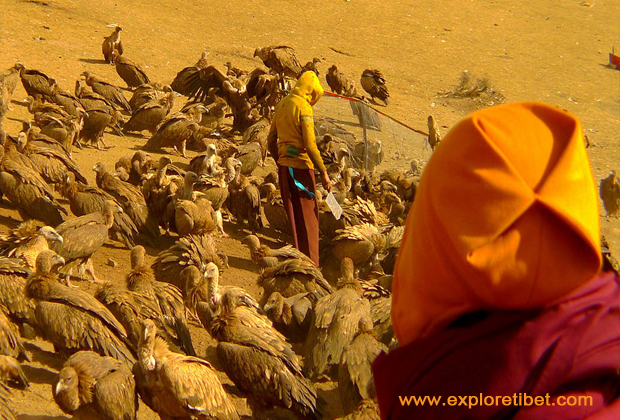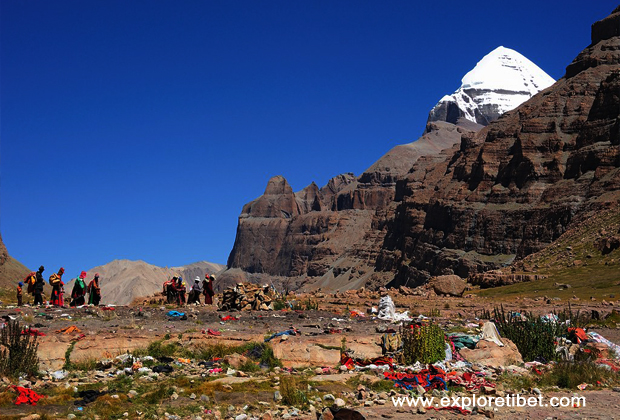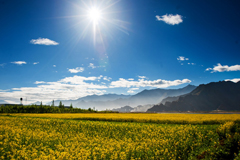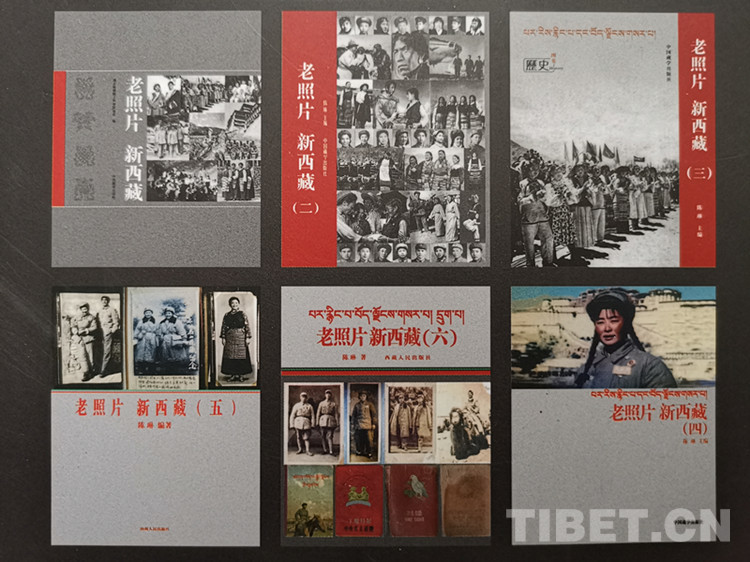Sky Burial – The traditional Tibetan Funeral Custom
All around the world, different cultures have different customs, and this is no different in the funeral customs of a people. In Tibet, customary funerals have always been a little different to those performed around most of the world. Known, as the “celestial funeral” sky burials in Tibet have long been the most common way to dispose of dead relatives. While this may seem like an unusual way to bury the dead, for Tibetans, the practice is closely related to their Buddhist religion, philosophy and Tibet culture and art.
What is a Sky Burial?
The common practice of sky burial, known in Tibet as “Jhator”, is a funeral for the Tibetan people, where the corpse is placed on a mountain to be eaten by the scavenging animals and carrion birds. This practice was common across Tibet and many parts of mainland China, as well as in Mongolia, Bhutan, and parts of India close to the borders with China.
Sky burials have evolved from the ancient practice of de-fleshing corpses, which have been seen in archaeological finds in western China. While many cultures buried their dead, or cremated them on huge pyres of wood, Tibet’s lack of forests and rock-hard frozen ground prompted a different form of disposal of the remains. The practice likely came out of practical considerations during the eras of the Bon religion on the plateau, since it is harder to burn and bury bodies.
Sky Burial in Tibetan Buddhism
After the influx of Buddhism from India in the 7th and 8th centuries, the practice became part of the religious culture of Tibet, since Tibetans follow a form of Vajrayana Buddhism, which teaches of the “transmigration” of the spirits. In Tibetan Buddhism, the corpse is considered to be an empty vessel, as the spirit has already departed for its next incarnation. With no need to preserve the body, with the exception of the major saints and lamas, the function of the sky burial became a way of disposing of the corpse in a way that can benefit the universe.

Vultures eating corpses
The customs of the Tibetan sky burial are actually recorded in a 12th century treatise known as the Bardo Thodol, or Book of the Dead. According to the texts, the body is to be cut up according to the orders of the lama or adept performing the ceremony, and the body parts left on a slab of rock in the dedicated “charnel grounds” that were built on mountains across Tibet. With its high altitude, the main carrion creatures that would come to eat the body parts were the Himalayan vultures, which would be well fed by the inanimate corpse, and pass the body back into the cycle of the Buddhist universe. It was also a given that the yak that carried the body to the charnel grounds would be set free, as thanks for its terrible burden.
Purpose and Meaning of Sky Burials
For Tibetan Buddhists, cremation or sky burial are both forms of the instructional teaching that all life is impermanent on earth. The practice is also considered to be an act of extreme generosity on the part of the deceased person, as the spirit of the person is now providing its former body as sustenance for the other living creatures of the world. Generosity and compassion are two of the most important virtues in Buddhism, and the generosity of the act is often included in the merits of the person, even though the spirit has already left the body.
In Tibetan folklore, it is widely believed that it is a good sign if the carrion animals or birds consume the entire body. Folk customs say that even the vultures will not eat the body of a dead person that had committed evil acts in his or her life. The sky burial is also an act of environmental protection, as there will be no disturbing of the earth to bury a body in the ground.
Sky Burial Rituals
When a person dies in Tibet, the family would wrap the corpse in white cloth and place it in the corner of the house for 3-5 days. During this time, monks or lamas would read the scriptures aloud over the corpse, so that the spirits of the dead can be released from purgatory and proceed on to their next reincarnation.
The date of the funeral is normally discovered by divination, and on the assigned day, the body carrier will remove the corpse to the charnel grounds. Prior to this, the body is unclothed by the family, and bent into the fetal position, sat with the knees up and the head on the knees.
At the charnel grounds, incense and tsampa are burned to attract the vultures, and the lamas will chant sutras over the corpse to redeem any of the sins committed in this life, before the next incarnation begins. The body is dealt with by a professional burial master, who then stretches the body out on the burial platform and cuts it into chunks to make it easier for the birds to consume.
The vultures of the mountains in Tibet are considered to be holy birds, and will only eat the body that was presented, without attacking other small creatures nearby. Bones are often smashed up after and mixed with tsampa for the vultures to consume as well. Any of the remains that are left behind by the vultures are collected up by the lamas and burned while they chant sutras from the Bardo Thodol to redeem the remaining sins that would tie the spirit to this life, making him a ghost to wander in purgatory forever.

Tibetan Vultures
Sky Burial Locations in Tibet
There are several locations in Tibet that still perform sky burials, and Drigung Til Monastery in Lhasa, located in Maizhokunggar County around 150 kilometers to the east of the city, is one of the more well-known. The monastery sits embedded into the rock face of the steep cliff, overlooking the stunning valley below. The charnel grounds are located higher up, behind the monastery.

Drigung Till Monastery Sky Brual Spot
Another well-known sky burial site, for those that have already completed the Kailash Kora in Ngari Prefecture in western Tibet, is located on the slopes of Mount Kailash, a short distance after you enter the valley to the west of the mountain on the Kailash Kora route.

Mt. Kailash Kora Sky Brual Spot
Traditionally, the charnel grounds are not visited by the families of the deceased, and today in Tibet, it is not permitted for foreign tourists to enter the charnel grounds, let alone view a sky burial in progress.
Tibet Stories

The story of Chosang, a former serf
"My life experience has fully demonstrated that without the Communist Party, there would be ...
Editor’s Choice
- Camera captures snow leopards mating in NW China
- Top political advisor stresses ethnic, religious affairs, poverty alleviation
- Qinghai-Tibet Plateau plays key role in enhancing East Asian monsoon under global warming
- Commentary: 14th Dalai Lama's ebbing influence in Tibet
- Top political adviser praises work of religious committee

